
Slovenia, officially the Republic of Slovenia, is a country in southern Central Europe. It is bordered by Italy to the west, Austria to the north, Hungary to the northeast, Croatia to the south and southeast, and a short coastline within the Adriatic Sea to the southwest. Slovenia is mostly mountainous and forested, covers 20,271 square kilometres (7,827 sq mi), and has a population of 2.1 million. Slovenes constitute over 80% of the country's population. Slovene, a South Slavic language, is the official language. Slovenia has a predominantly temperate continental climate, with the exception of the Slovene Littoral and the Julian Alps. A sub-mediterranean climate reaches to the northern extensions of the Dinaric Alps that traverse the country in a northwest–southeast direction. The Julian Alps in the northwest have an alpine climate. Toward the northeastern Pannonian Basin, a continental climate is more pronounced. Ljubljana, the capital and largest city of Slovenia, is geographically situated near the centre of the country.

Ljubljana is the capital and largest city of Slovenia, located along a trade route between the northern Adriatic Sea and the Danube region, north of the country's largest marsh, inhabited since prehistoric times. It is the country's cultural, educational, economic, political and administrative center.

Trbovlje is Slovenia's tenth-largest town, and the seat of the Municipality of Trbovlje. It is located in the valley of a minor left tributary of the Sava River in the Central Sava Valley in central-eastern Slovenia.

Prešeren Square is the central square in Ljubljana, the capital of Slovenia. It is part of the old town's pedestrian zone and a major meeting point where festivals, concerts, sports, political events, and protests take place. It was redesigned according to plans by Edvard Ravnikar from a funnel-shaped to a circular form in 1987–88 and renovated in 2007.
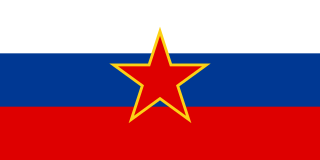
The Socialist Republic of Slovenia, commonly referred to as Socialist Slovenia or simply Slovenia, was one of the six federal republics forming Yugoslavia and the nation state of the Slovenes. It existed under various names from its creation on 29 November 1945 until 25 June 1991.

The Kresija Building or Kresija Palace is a building that - together with the Philip Mansion - marks the entrance to the old town of Ljubljana, the capital of Slovenia. It stands at the Adamič and Lunder Embankment on the right bank of the river Ljubljanica immediately after the Triple Bridge and borders Pogačar Square, Stritar Street, and Maček Street. Until 2007, the Ljubljana Center Administrative Unit was stationed in the building. Now, it houses a number of municipal offices, the Kresija Gallery, and the Ljubljana visitor centre.

Zois Mansion is a mansion in Ljubljana, the capital of Slovenia. It stands in the Center District, at Breg, a street on the west (left) bank of the Ljubljanica, between Teutonic Street to the north and Zois Street to the south. The mansion served as residence of Baron Sigmund Zois, a leading figure of Enlightenment in the Slovene Lands of the Austrian monarchy and supporter of the revival of Slovene culture and literature.

Congress Square is one of the central squares in Ljubljana, the capital of Slovenia. In the late 1930s, the square was renovated by the prominent Slovene architect Jože Plečnik. Since August 2021, it has been inscribed as part of Plečnik's legacy on the UNESCO World Heritage List.

Tivoli City Park or simply Tivoli Park is the largest park in Ljubljana, the capital of Slovenia. It is located on the western outskirts of the Center District, stretching to the Šiška District to the north, the Vič District to the south, and the Rožnik District to the west. Several notable buildings and art works stand in the park. Since 1984, the park has been protected as part of Tivoli–Rožnik Hill–Šiška Hill Nature Park. It is home to a variety of bird species.
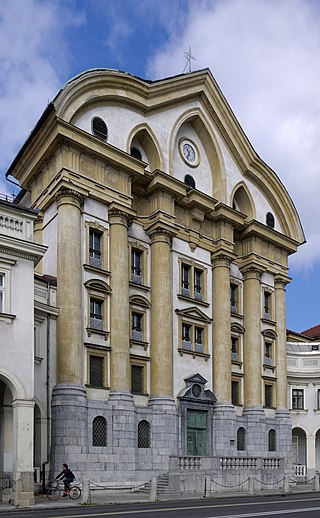
Ursuline Church of the Holy Trinity, officially Holy Trinity Parish Church in Ljubljana, also Nun Church, is a parish church in Ljubljana, the capital of Slovenia. It is located at Slovene Street, along the western border of Congress Square. It was built between 1718 and 1726 in the Baroque style.
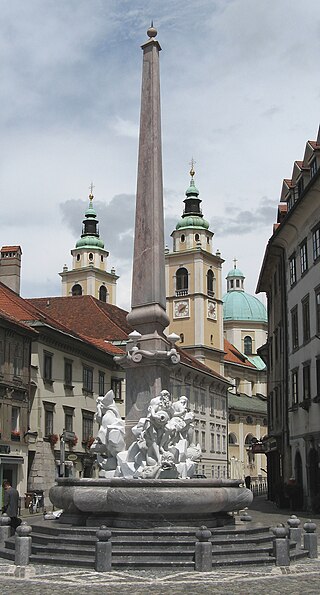
The Robba Fountain, since the first half of the 20th century also known as the Fountain of the Three Carniolan Rivers, is the fountain that stands in front of Ljubljana Town Hall at Town Square in Ljubljana, the capital of Slovenia. It was originally made in 1751 by the Italian sculptor Francesco Robba and is one of the city's most recognisable symbols.
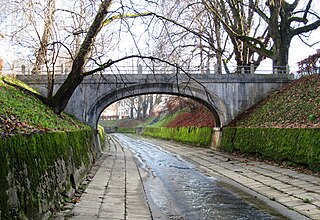
The Rooster Bridge in Ljubljana, the capital of Slovenia, is a footbridge crossing the Gradaščica River in the Trnovo District south of the downtown of Ljubljana. It stands between the Trnovo Bridge and the outflow of the Gradaščica into the Ljubljanica, and connects Gradaščica Street in the northern Krakovo neighbourhood to Eipper Street in the southern Trnovo neighbourhood. These are the oldest Ljubljana suburbs, known for their market gardens and cultural events.

The Trail of Remembrance and Comradeship, also referred to as the Trail Along the Wire, the Trail Around Ljubljana, or the Green Ring, is a gravel-paved recreational and memorial walkway almost 33 km (21 mi) long and 4 m (13 ft) wide around the city of Ljubljana, the capital of Slovenia. The walkway leads past Koseze Pond and across Golovec Hill.
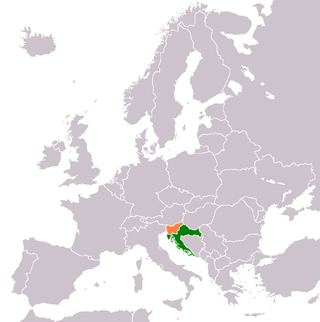
Croatia–Slovenia relations are foreign relations between Croatia and Slovenia. Croatia has an embassy in Ljubljana and two honorary consulates in Maribor and Koper. Slovenia has an embassy in Zagreb and an honorary consulate in Split. The countries share 670 km (420 mi) of common border. Relations between Slovenia and Croatia are generally considered to be friendly, but plagued with a series of unresolved border disputes and other vestiges from the time when both countries were the northernmost part of SFR Yugoslavia. Slovenia has given full support to Croatia's membership in the European Union and NATO.

The National Assembly Building, officially the Assembly of the Republic of Slovenia, also colloquially the Parliament in Ljubljana, the capital of Slovenia, is a modernist palace housing the legislature of Slovenia. Built between 1954 and 1959 upon plans by the architect Vinko Glanz, it is a three-story building with an area of 2,200 m2 (24,000 sq ft). It is located at Republic Square in the center of Ljubljana. Annual visitor numbers are around 13,000.
NLB Group is the largest banking and financial group in Slovenia, with the core of its activity being in Southeast Europe.
The Ljubljana Central Market is a market in Ljubljana, Slovenia. The riverside market building, sometimes referred to as Plečnik's Market, was designed by Jože Plečnik between 1931 and 1939. It stretches between the Triple Bridge and the Dragon Bridge, on the right bank of the Ljubljanica River. The marketplace and Vodnik Square, where it is located, are cultural monuments of national significance. It is partly located at Adamič and Lunder Embankment and at Pogačar Square.

The Cooperative Business Bank Building is a building designed in 1921 by architect Ivan Vurnik and his wife Helena Vurnik in the so-called Slovene "National Style" using decorative ornaments in the colors of Slovene tricolor and was inspired by the Vienna Secession style of architecture. It was commissioned by the Cooperative Business Bank, a local credit institution. It is located on Miklosich Street, Ljubljana, capital city of Slovenia, and has been called "the most beautiful building" in Ljubljana.
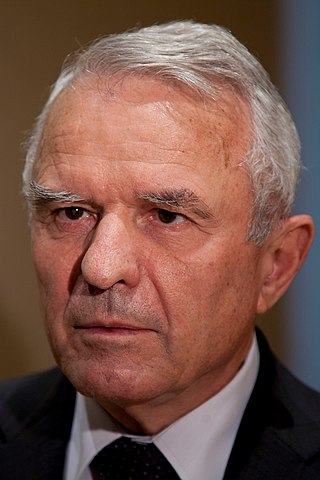
Marko Kranjec is a former Slovenian politician. He served as the country's first Minister of Finance from 16 May 1990 to 8 May 1991.

The Ljubljana Credit Bank was a significant joint-stock bank headquartered in Ljubljana, created in 1900 by Prague-based Živnostenská Banka as a local affiliate and eventually liquidated in 1945.




















